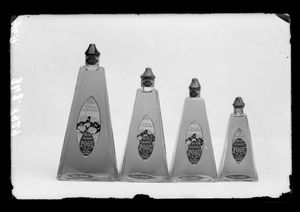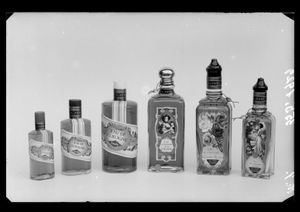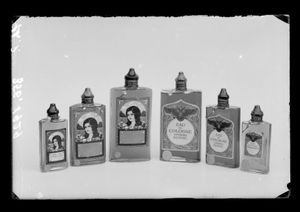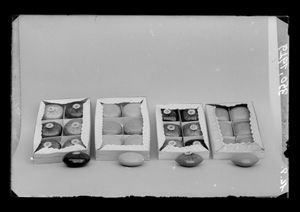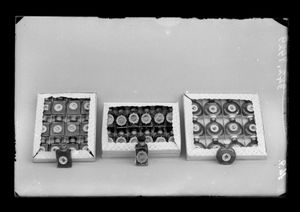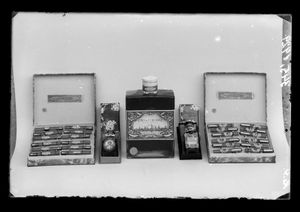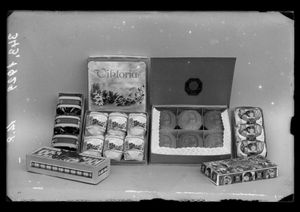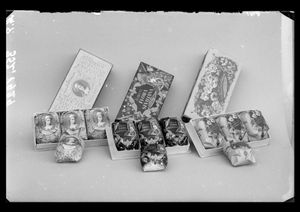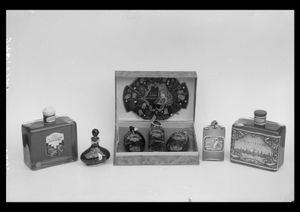Paraphernalia
There are strong perfumes for which all matter
Is porous. One would say they go through glass.
On opening a coffer that has come from the East,
Whose creaking lock resists and grates,
Or in a deserted house, some cabinet
Full of the Past's acrid odor, dusty and black,
Sometimes one finds an antique phial which remembers,
Whence gushes forth a living soul returned to life. 1
– Charles Baudelaire
My initial encounter with photography came through an album of the Marubi Dynasty printed in France: Albania. Visage des Balkans. Écrits de lumière, Arthaud, 1995. A former student of my grandmother had gifted it to her as a sign of respect. I looked through it on a trunk, amidst her various belongings (including the aforementioned book), and from that automatic flipping through pages, even though uninterested at the time, I still retain the amazement I felt at the sight of those black pages, where images with torn corners were placed.
A photographic form of this kind, geometrically unshaped, reappeared to me years later, when I unexpectedly stumbled upon an album from the same archive, which included various authors: Marubi: The Mobile Lens of an Archive, Marubi Phototeque, 2015. Here too, the vast majority of photographs were laid out on black pages, but this time the shade was lighter than that of the French edition.
Four photographs by Shan Pici (1904-1976) which disrupted the prevailing and imposing rhythm of photographs with solemn rituals, idyllic backgrounds and strange subjects, caught my attention. 'My photos,' at that moment, were some products and glasswork snapshots taken in 1929, five years after Shan Pici and his brothers, Tefë and Ndrekë, had opened their studio 'Fotografija Pici' in Shkodër (a studio that would have celebrated its 100th anniversary this year).
With a single glance, aiming to capture impulses all at once, the design of those bottles, the ethereal light of a suspended space, the calligraphy of labels, the portraits of ladies, the gradual shapes, the cosmetic cases, hinted at elite aspirations and distant worlds. This also demonstrated the commitment with which these products were developed and introduced to the market.
With another speed - this time cerebral - those products, besides their aforementioned opulence, were re-created in my mind as a mysterious conglomerate, as "paraphernalia" that would grace sophisticated environments where decadence was celebrated, revolving around that center where the aspirations of universal madness emanated (and I am paraphrasing Baudelaire - "a Lyric Poet in the Era of High Capitalism" – about Paris of his time).
More than mere cosmetic objects, I had the impression that those were flasks of elixirs, portions enveloped in thyme, bags of opium, mercury and bottles of absinthe that would circulate secretly - as per the tradition of the "maudit" poets.
A vision that photography itself had distilled with its chemical psychedelia, with dry gelatin and silver chloride on glass, flattened on album pages as if they were "herbarium flowers".
In the 1920s, in Shkodër, the Pogu Brothers had established oil, soap and tobacco factories as well as trading the afore mentioned perfumes.They operated with machinery imported from abroad. Years later, after the new system of the communist regime was consolidated, their factories were closed, their assets were confiscated and Tefë Pogu was sentenced to prison. They say - and these are the testimonies of his daughter - that the trial took place at his house.
Meanwhile, on a global scale, advertising photography or commercial photograph as a genre experienced exponential growth, driven by the urgent intertwining of image usage needs with the trends of a specific type of marketing. If in the 1920s this type of photography was used in less than 15% of the illustrated advertisements in magazines, by the 1930s its percentage had almost reached 80%. Throughout those years, the aesthetics of advertising photography and its effects, the softness of glamorous atmospheres, its hyperbolic slogans, etc., paralleled the developments in industrial design.
In our historical and political circumstances, these efforts were quickly stifled. With the surge of state control, which impeded any private activity (including photographic studios), they remained only sporadic fragments. The tendencies we regret, in conclusion, resemble traces of a ' dusty chrysalis': of a larva that never managed to become a butterfly.
Curated by Lek M. Gjeloshi
- Fragment from “The Perfume Flask”, Charles Baudelaire, Les Fleurs du mal.
- In 2013, the Marubi National Phototeque published a photo album with focusing on landscape, a genre for which Shan Pici is a pioneer in Albanian photography. And yet, this aspect, just like the images in this publication, remains only a glimpse of a diverse activity, which left behind about 54,000 glass and celluloid negatives.
- This is how is entitled Walter Benjamin’s work about Baudelaire.
- Dizionario della fotografia I, a cura di Robin Lenman, ed. it. a cura di Gabriele D’Autila, Einaudi, Torino 2008, pp. 402-403.
